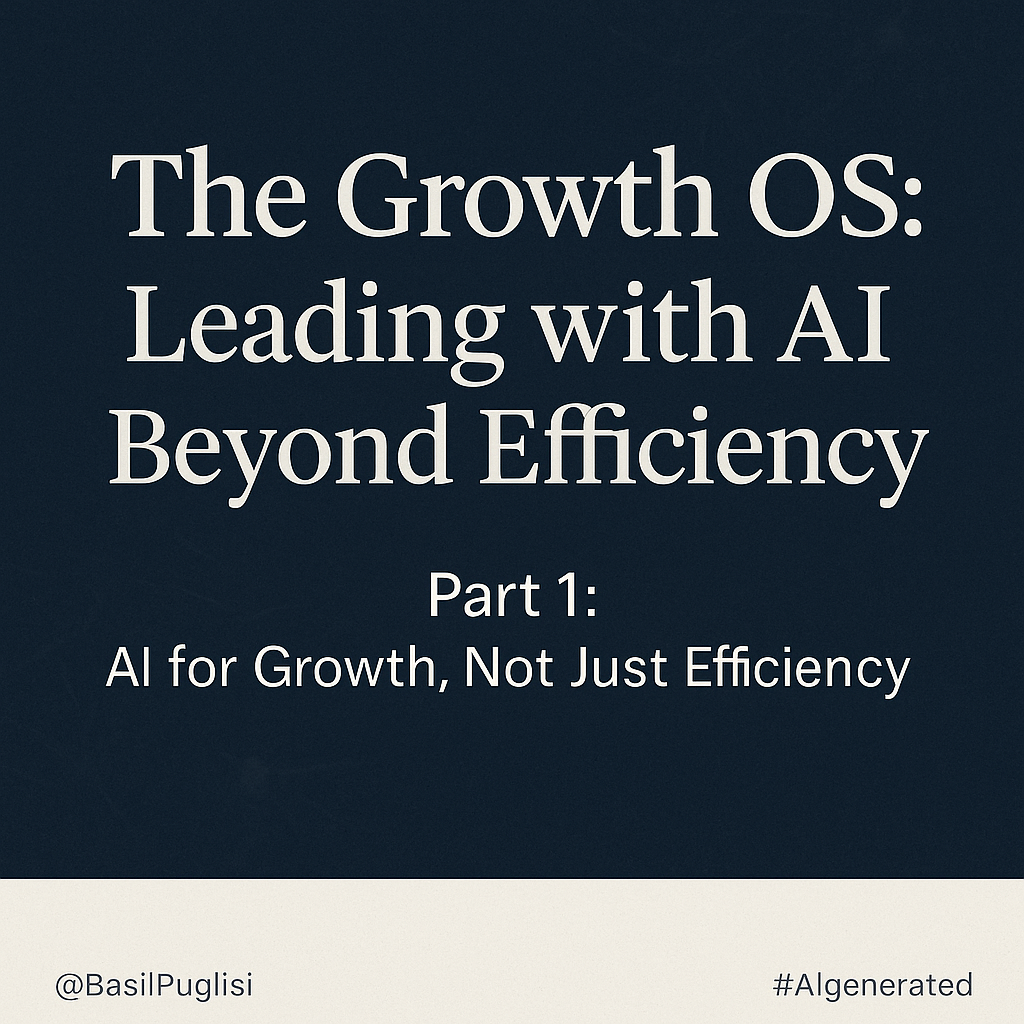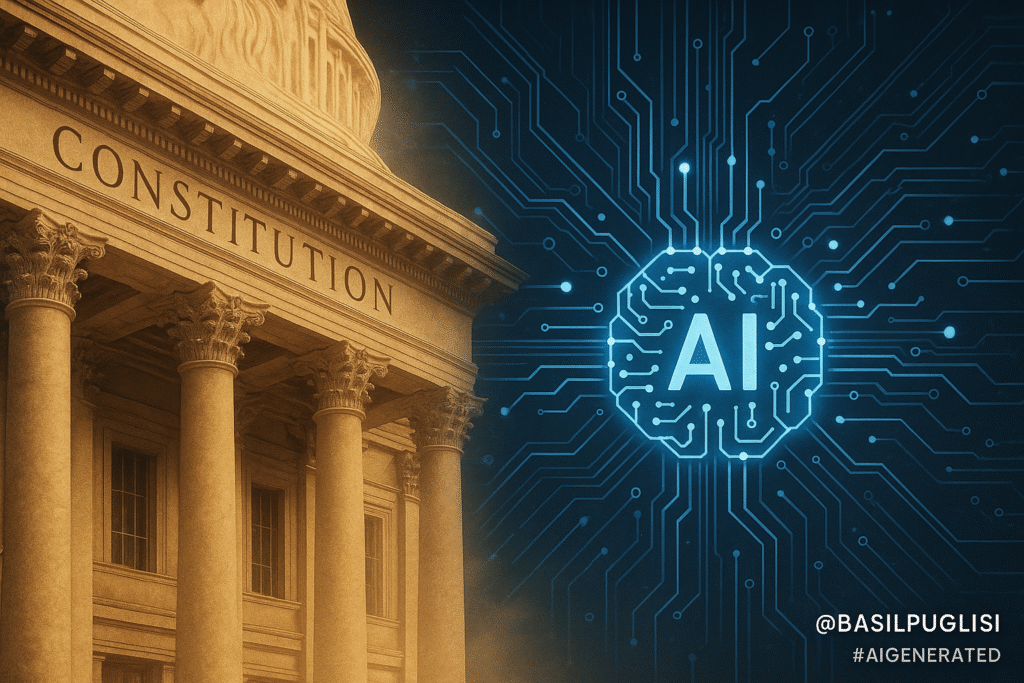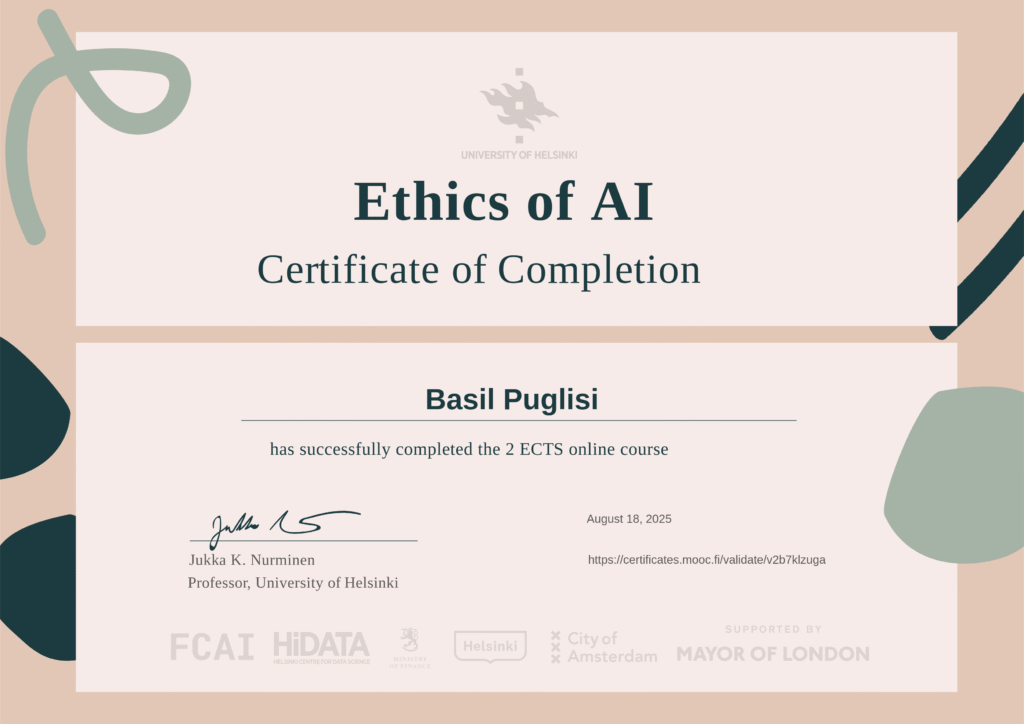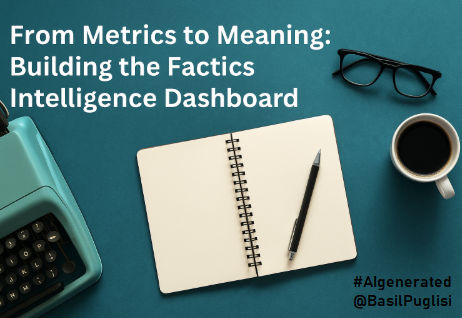
Part 2: From Pilots to Transformation
Pilots are safe. Transformation is bold. That is why so many AI projects stop at the experiment stage. The difference is not in the tools but in the system leaders build around them. Organizations that treat AI as an add-on end up with slide decks. Organizations that treat it as part of a Growth Operating System apply it within their workflows, governance, and culture, and from there they compound advantage.
The Growth OS is an established idea. Bill Canady’s PGOS places weight on strategy, data, and talent. FAST Ventures has built an AI-powered version designed for hyper-personalized campaigns and automation. Invictus has emphasized machine learning to optimize conversion cycles. The throughline is clear: a unified operating system outperforms a patchwork of projects.
My application of Growth OS to AI emphasizes the cultural foundation. Without trust, transparency, and rhythm, even the best technical deployments stall. Over sixty percent of executives name lack of growth culture and weak governance as the largest barriers to AI adoption (EY, 2024; PwC, 2025). When ROI is defined only as expense reduction, projects lose executive oxygen. When governance is invisible, employees hesitate to adopt.
The correction is straightforward but requires discipline. Anchor AI to growth outcomes such as revenue per employee, customer lifetime value, and sales velocity. Make governance visible with clear escalation paths and human-in-the-loop judgment. Reward learning velocity as the cultural norm. These moves establish the trust that makes adoption scalable.
To push leaders beyond incrementalism, I use the forcing question: What Would Growth Require? (#WWGR) Instead of asking what AI can do, I ask what outcome growth would demand if this function were rebuilt with AI at its core. In sales, this reframes AI from email drafting to orchestrating trust that compresses close rates. In product, it reframes AI from summaries to live feedback loops that de-risk investment. In support, it reframes AI from ticket deflection to proactive engagement that reduces churn and expands retention.
“AI is the greatest growth engine humanity has ever experienced. However, AI does lack true creativity, imagination, and emotion, which guarantees humans have a place in this collaboration. And those that do not embrace it fully will be left behind.” — Basil Puglisi
Scaling this approach requires rhythm. In the first thirty days, leaders define outcomes, secure data, codify compliance, and run targeted experiments. In the first ninety days, wins are promoted to always-on capabilities and an experiment spine is created for visibility and discipline. Within a year, AI becomes a portfolio of growth loops across acquisition, onboarding, retention, and expansion, funded through a growth P&L, supported by audit trails and evaluation sets that make trust tangible.
Culture remains the multiplier. When leaders anchor to growth outcomes like learning velocity and adoption rates, innovation compounds. When teams see AI as expansion rather than replacement, engagement rises. And when the entire approach is built on trust rather than control, the system generates value instead of resistance. That is where the numbers show a gap: industries most exposed to AI have quadrupled productivity growth since 2020, and scaled programs are already producing revenue growth rates one and a half times stronger than laggards (McKinsey & Company, 2025; Forbes, 2025; PwC, 2025).
The best practice proof is clear. A subscription brand reframed AI from churn prevention to growth orchestration, using it to personalize onboarding, anticipate engagement gaps, and nudge retention before risk spiked. The outcome was measurable: churn fell, lifetime value expanded, and staff shifted from firefighting to designing experiences. That is what happens when AI is not a tool but a system.
I have also lived this shift personally. In 2009, I launched Visibility Blog, which later became DBMEi, a solo practice on WordPress.com where I produced regular content. That expanded into Digital Ethos, where I coordinated seven regular contributors, student writers, and guest bloggers. For two years we ran it like a newsroom, which prepared me for my role on the International Board of Directors for Social Media Club Global, where I oversaw content across more than seven hundred paying members. It was a massive undertaking, and yet the scale of that era now pales next to what AI enables. In 2023, with ChatGPT and Perplexity, I could replicate that earlier reach but only with accuracy gaps and heavy reliance on Google, Bing, and JSTOR for validation. By 2024, Gemini, Claude, and Grok expanded access to research and synthesis. Today, in September 2025, BasilPuglisi.com runs on what I describe as the five pillars of AI in content. One model drives brainstorming, several focus on research and source validation, another shapes structure and voice, and a final model oversees alignment before I review and approve for publication. The outcome is clear: one person, disciplined and informed, now operates at the level of entire teams. This mirrors what top-performing organizations are reporting, where AI adoption is driving measurable growth in productivity and revenue (Forbes, 2025; PwC, 2025; McKinsey & Company, 2025). By the end of 2026, I expect to surpass many who remain locked in legacy processes. The lesson is simple: when AI is applied as a system, growth compounds. The only limits are discipline, ownership, and the willingness to move without resistance.
Transformation is not about showing that AI works. That proof is behind us. Transformation is about posture. Leaders must ask what growth requires, run the rhythm, and build culture into governance. That is how a Growth OS mindset turns pilots into advantage and positions the enterprise to become more than the sum of its functions.
References
Canady, B. (2021). The Profitable Growth Operating System: A blueprint for building enduring, profitable businesses. ForbesBooks.
Deloitte. (2017). Predictive maintenance and the smart factory.
Forbes. (2025, June 2). 20 mind-blowing AI statistics everyone must know about now in 2025.
Innovapptive. (2025, April 8). AI-powered predictive maintenance to cut downtime & costs.
F7i.AI. (2025, August 30). AI predictive maintenance use cases: A 2025 machinery guide.
McKinsey & Company. (2025, March 11). The state of AI: Global survey.







